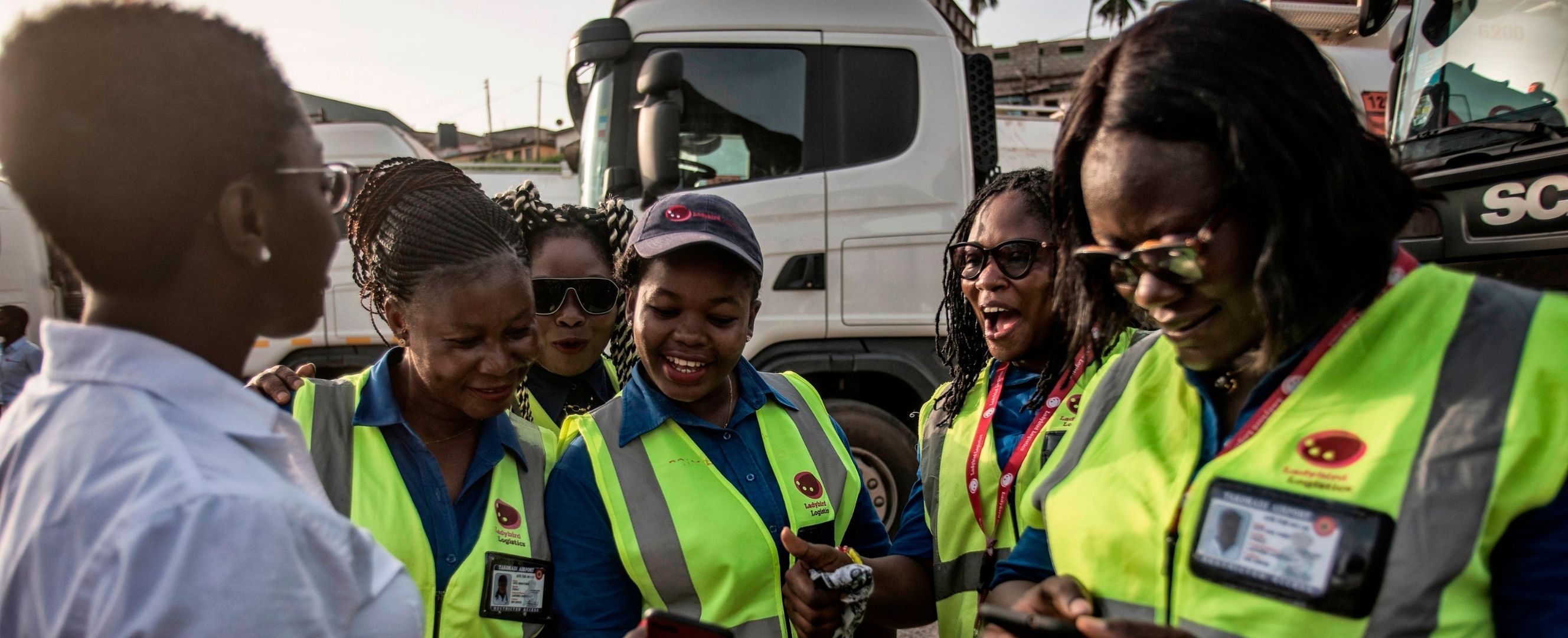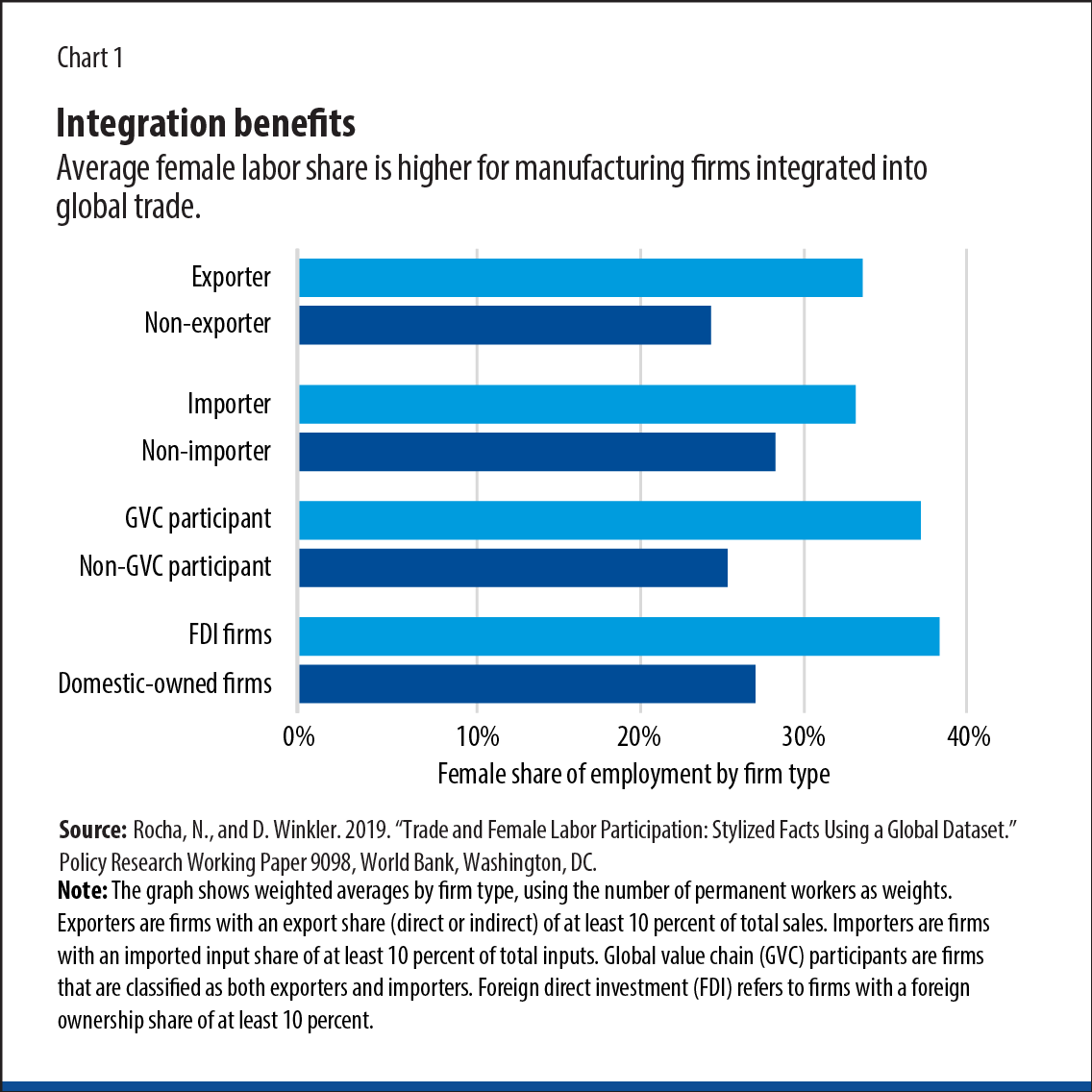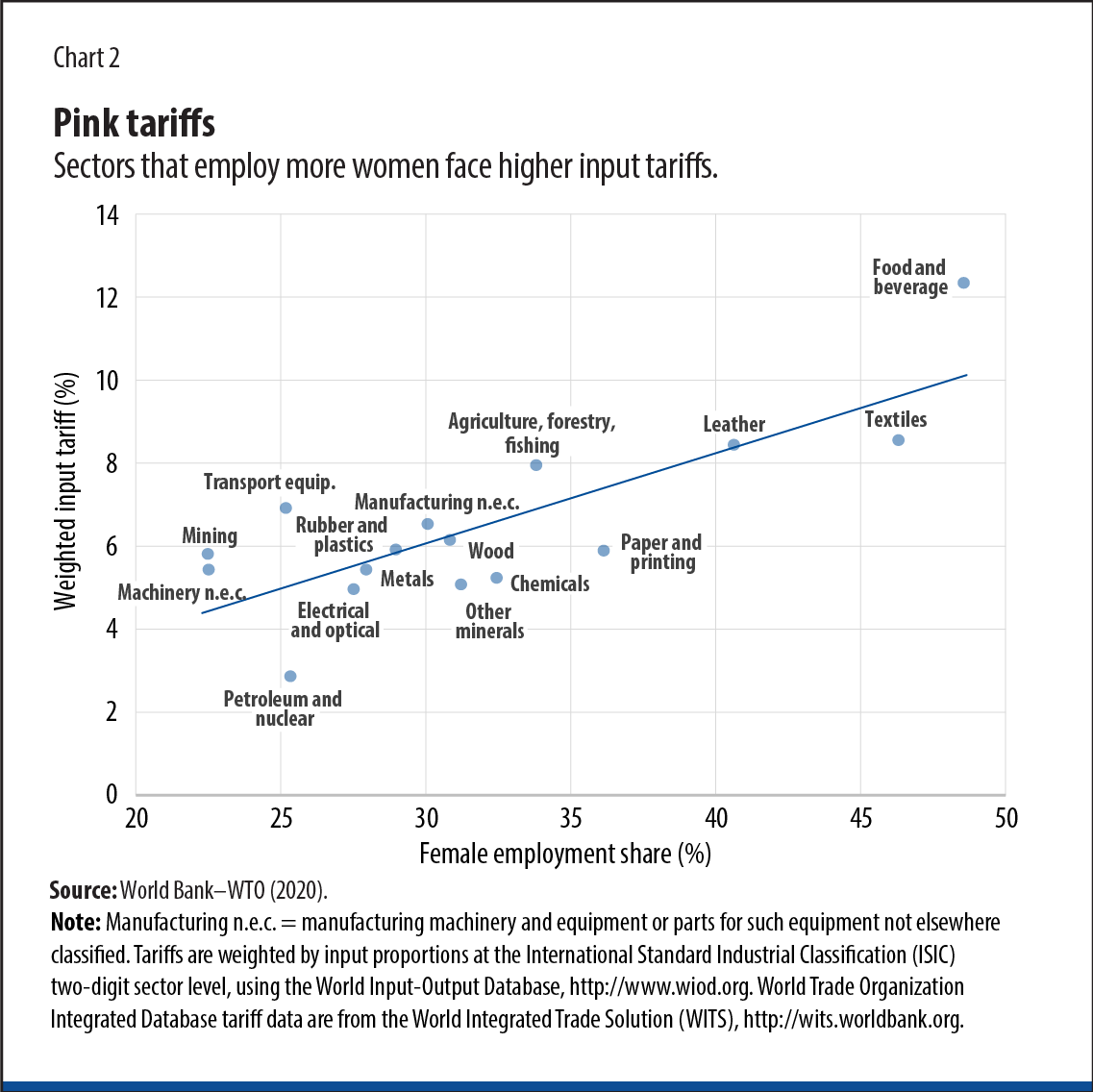International trade can benefit women, especially in developing economies, but the rewards depend on determined policy action
Gender equality is not only a fundamental right but an economic imperative. A considerable body of research shows that it makes economic sense for society to benefit fully from the skills and labor of the entire population, not just half of it. And it makes economic sense for men and women to receive commensurate rewards. For developing economies, the economic case for gender equality is even more compelling, for two reasons: the levels of inequality between men and women are higher, and the potential rewards from reducing the gender gap are greater.
So how can developing economies promote gender equality? International trade offers a promising path. Our research shows that trade has the potential to significantly boost women’s role in the economy, reduce inequality, and expand women’s access to skills and education. Countries that are open to international trade tend to grow faster, innovate more, improve productivity, and provide higher income and more opportunities to their people.
To help the developing world close the gender gap and reap the rewards of greater equality and opportunity for women, economists like us are seeking to better understand the links between gender equality and trade and how trade policy affects women and men differently. This line of research has faced a key problem: a dearth of data, disaggregated by sex, on the types of goods women consume, their occupations, and the sectors where they work.
How trade affects women
A recent World Bank and World Trade Organization report on Women and Trade seeks to fill this knowledge gap. Building on new analysis and new sex-disaggregated data, the report aims to advance understanding on the two-way relationship between trade and gender equality and to identify a series of opportunities through which women can gain from trade. The report also provides a framework to identify the various channels through which trade affects women as workers, both at home and at work; as consumers; and as decision makers.
The report confirms that trade is beneficial to women in several ways.
Exporters employ more women. In developing economies, women make up 33 percent of the workforce of exporting firms, compared with just 24 percent of non-exporting firms. Women see similar advantages in businesses that are part of global value chains or have foreign investors, which on average employ 11 to 12 percent more women compared with other firms (Chart 1).
Trade increases women’s wages and can help reduce economic inequality. Women’s share of total wages increases both because exporting firms pay better wages and because they hire more women. Doubling the value of exports in a country’s manufacturing sector would increase the average female wage share from 24 to roughly 30 percent. In Africa, freer trade would help close the wage gap, especially for skilled women workers. In a World Bank analysis on the potential impact of the African Continental Free Trade Area, models suggest that by 2035, wages for skilled and unskilled female labor could be 4 percent and 3.7 percent higher (relative to baseline), compared with a 3.2 percent increase for male workers at all skill levels.
Trade creates better jobs for women. Workers in both developed and emerging market economies are more likely to be employed in formal jobs, which bring better benefits, training, and job security, if they work in sectors that trade more or are more integrated into global value chains. This effect is bigger for women than for men. Our study showed that 13 percent of women in highly integrated sectors work informally, compared with 20 percent in less integrated sectors. For men, the probability of working informally falls from 9.5 percent in less integrated sectors to 5.0 percent in those that are highly integrated.
Trade openness can increase women’s incomes and consumption. Eliminating import tariffs raises the average real income for female-headed households compared with male-headed households in more than three-quarters of the 54 developing economies analyzed. On average, real income gains reaped by removing import tariffs would be 2.5 percent greater for households headed by women than for those headed by men. In countries such as Burkina Faso and Cameroon, this increase is equivalent to one year’s spending on education or health.
Opening up to trade therefore benefits women in developing economies because it expands the sectors where women work, reduces prices for the goods women consume, and allows firms that are more productive to grow. Increased competition generated by trade also makes it costlier to discriminate against women, which narrows the wage gap and improves working conditions for women.
Trade’s benefits
Three global trends present new and powerful opportunities for women to grow their representation in 21st century trade and better reap its benefits: expanding trade in services, the growth of global value chains, and the rise of digital trade.
Global economic activity is shifting toward services, which employ a larger share of women than sectors such as agriculture and manufacturing. Moreover, trade in services is expanding faster than trade in goods, providing more opportunities for women to trade. Services now create the most jobs and do so earlier in the development process (Ghani and O'Connell 2014; Rodrik 2016). According to International Labour Organization statistics, in 2000, 46 percent of all services sector workers were women, rising to about 58 percent by 2020.
Global value chains create better jobs and increase income opportunities for women across the economy. They better connect female-run micro and small businesses and small-scale farmers to international markets. Women working in global value chains have a 10 percentage point higher probability of being in the formal workforce than women in sectors that are not highly integrated into such networks.
The growth of digital services presents another opportunity for women in developing economies. Digital technologies allow women to overcome constraints ranging from limited access to finance and education to limited mobility and flexibility. Digital platforms in both developed and developing economies have witnessed a sharp rise in women-owned companies over the years. For example, about half of the entrepreneurs on Alibaba platforms are women, compared with a quarter among all entrepreneurs in China. And growing online trade in education and health services increases women’s access to those services and provides better employment opportunities in sectors where women face less discrimination.
Rebalancing policies
But these trends alone are not enough to close the gender gap. Developing economies must implement significant policy reforms to help women overcome discrimination. Policymakers need to adjust tariff policies that stack the deck against women. Sectors that are female-intensive—such as food and beverages, and textiles and apparel—on average face higher tariffs on inputs (Chart 2). As a result, female producers pay more for their inputs and face higher restrictions on their exports than men. In India, this "pink tariff" amounts to 6 percentage points (Mendoza, Nayyar, and Piermartini 2018).
Nontariff measures, such as product standards and regulatory measures, can also affect women more than men. Because these measures often represent a fixed cost of trading, the burden is greater for small and medium enterprises—often owned by women—than it is for large companies. Small exporters also lack specialized teams to manage the trading process and, because they export infrequently or in small batches, are particularly exposed to the costs of cumbersome administrative procedures. There are other barriers, including limited access to trade financing and higher exposure to extortion and physical harassment at the border.
International cooperation in key areas—such as trade policy to close the gender gap in tariffs and trade facilitation to streamline regulatory requirements for goods to cross the border—would advance gender equality without explicitly targeting women. Policies to improve access to education, financial resources, digital technologies, and information can also help women maximize the benefits of trade. Such policies must be well designed, coordinated, and complementary to address the specific barriers that women face (such as time constraints and limited geographic mobility because of the additional tasks society imposes on them due to their role in the family).
Pandemic and geopolitical tensions
The recommendations of the report are essential to guide policymakers as countries recover from the economic disruptions caused by the pandemic and face the consequences of geopolitical tensions, including the war in Ukraine. In 2020, the pandemic crisis destroyed 4.2 percent of women's employment worldwide (a drop of 54 million jobs), compared with 3 percent for men (a drop of 60 million jobs). Women also lost $800 billion in income, a figure that does not account for wages lost in informal jobs, where women tend to be overrepresented. The pandemic had a disproportionate impact on sectors that tend to employ more women, and women bore the brunt of childcare center and school closures because of their greater family caregiving responsibilities (Landivar and others 2020), although teleworking has eased this burden. Increased investment in digital technologies, spurred by the pandemic, will give women more opportunities to benefit from trade going forward.
The recent rise in protectionist pressures, global value chain reshaping, and geopolitical tensions all threaten to reverse the gains in gender equality achieved so far. Open trade will be essential to designing a gender-inclusive economic recovery.
While the overall impact of trade on women has been positive and trade has the potential to provide further opportunities, trade-related disruptions will affect some sectors and workers as comparative advantages shift. Complementary labor market policies would help women in developing economies acquire new skills or move to new locations where job opportunities are improving. To craft such policies, governments will need additional studies of the impact of trade on women. That type of analysis, in turn, will require more gender-disaggregated data.
Opinions expressed in articles and other materials are those of the authors; they do not necessarily reflect IMF policy.
References:
Ghani, E., and S. D. O’Connell. 2014. “Can Service Be a Growth Escalator in Low-Income Countries?” Policy Research Working Paper 6971, World Bank, Washington, DC.
Landivar, L., L. Ruppanner, W. Scarborough, and C. Collins. 2020. “Early Signs Indicate That COVID-19 Is Exacerbating Gender Inequality in the Labor Force.” Socius 6: 1–3.
Mendoza, A., G. Nayyar, and R. Piermartini. 2018. "Are the ‘Poor’ Getting Globalised?" In Trade and Poverty Reduction: New Evidence of Impacts on Developing Countries. World Bank and World Trade Organization. https://www.wto.org/english/res_e/publications_e/wto_wbjointpublication_e.htm.
Rodrik, D. 2016. “Premature Deindustrialization.” Journal of Economic Growth 21 (1): 1–33.
World Bank and World Trade Organization (World Bank–WTO). 2020. Women and Trade: The Role of Trade in Promoting Gender Equality. Washington, DC: World Bank. https://www.wto.org/english/res_e/publications_e/women_trade_pub2807_e.htm












